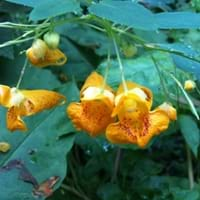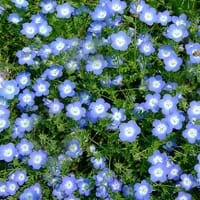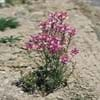Type
Fern, Succulent
Flowering Plants, Herbs
Origin
Africa, Canada, North America, United States
Western United States, Alaska, California
Types
impatiens balsaminak, impatiens hawkeri
Nemophila menziesii var. atomaria, Nemophila menziesii var. integrifolia, Nemophila menziesii var. menziesii
Habitat
Grassland, River side
Chaparral, Grassland
USDA Hardiness Zone
2-11
3-9
AHS Heat Zone
12 - 1
Not Available
Sunset Zone
Not Available
A1, A2, A3, H1, H2, 1a, 1b, 2a, 2b, 3a, 3b, 4, 5, 6, 7, 8, 9, 10, 11, 12, 13, 14, 15, 16, 17, 18, 19, 20, 21, 22, 23, 24
Habit
Upright/Erect
Cushion/Mound-forming
Flower Color
Yellow, Orange
White, Blue, Light Blue, Sky Blue
Flower Color Modifier
Bicolor
Bicolor
Fruit Color
Green
Not Available
Leaf Color in Spring
Green
Green
Leaf Color in Summer
Green
Green
Leaf Color in Fall
Green
Not Available
Leaf Color in Winter
Light Green
Light Green
Leaf Shape
Elliptic, toothed
Lobed
Plant Season
Summer, Fall
Spring, Summer, Winter
Sunlight
Partial Sun, Partial shade
Full Sun, Partial Sun
Growth Rate
Fast
Very Fast
Type of Soil
Loam, Sand
Loam, Sand
The pH of Soil
Acidic, Neutral
Acidic, Neutral
Soil Drainage
Average
Well drained
Bloom Time
Summer, Late Summer, Early Fall
Early Spring, Spring, Late Spring, Winter, Late Winter
Tolerances
Pollution
Drought
Where to Plant?
Ground
Ground
How to Plant?
Stem Planting, Transplanting
Seedlings
Plant Maintenance
Low
Medium
Watering Requirements
Needs less watering
Do not water frequently, Never Over-water
In Summer
Moderate
Lots of watering
In Spring
Moderate
Moderate
In Winter
Average Water
Average Water
Soil pH
Acidic
Acidic, Neutral
Soil Type
Clay
Loam, Sand
Soil Drainage Capacity
Clay, Moist
Well drained
Sun Exposure
Bright direct sunlight
Full Sun, Partial Sun
Pruning
Prune lower leaves, Prune ocassionally
Not Available
Fertilizers
Fertilize only when soil is poor
All-Purpose Liquid Fertilizer
Pests and Diseases
Bacteria wilt, Downy mildew, Drought
Red blotch
Plant Tolerance
Drought, Dry soil
Drought
Flower Petal Number
Single
Single
Foliage Texture
Medium
Fine
Foliage Sheen
Matte
Not Available
Attracts
Bees, Butterflies, Hummingbirds
Bees, Butterflies
Allergy
allergic conjunctivitis, Asthma, Runny nose
Not Available
Aesthetic Uses
Cottage Garden
Beautification, Bouquets, Showy Purposes
Beauty Benefits
Poison Ivy
Not Available
Environmental Uses
soil erosion prevension on hill slopes
Air purification
Medicinal Uses
antimicrobial, treating poison ivy, Upset stomach
Pain killer
Part of Plant Used
Bark, Leaves
Flowers
Other Uses
Can be made into a herbal tea
Not Available
Used As Indoor Plant
No
No
Used As Outdoor Plant
Yes
Yes
Garden Design
Cottage garden
Bedding Plant, Container, Hanging Basket, Mixed Border, Wildflower
Botanical Name
IMPATIENS capensis
NEMOPHILA menziesii
Common Name
Jewelweed
Baby Blue Eyes
In Hindi
Not Available
Baby Blue Eyes Plant
In German
Impatiens capensis
Baby Blue Eyes Pflanzen
In French
Impatiente du Cap
bébé yeux bleus usine
In Spanish
Impatiens capensis
bebé ojos azules planta
In Greek
Impatiens capensis
μωρό μπλε μάτια των φυτών
In Portuguese
Impatiens capensis
bebê olhos azuis planta
In Polish
Impatiens capensis
dziecko niebieskie oczy roślin
In Latin
Impatiens capensis
baby blue eyes plant
Phylum
Magnoliophyta
Not Available
Class
Magnoliopsida
Magnoliopsida
Order
Geraniales
Not Available
Family
Balsaminaceae
Boraginaceae
Genus
Impatiens
Nemophila
Clade
Dicotyledonous
Angiosperms, Asterids, Eudicots
Tribe
Not Available
Not Available
Subfamily
Not Available
Hydrophylloideae
Importance of Jewelweed and Baby Blue Eyes Plant
Want to have the most appropriate plant for your garden? You might want to know the importance of Jewelweed and Baby Blue Eyes Plant. Basically, these two plants vary in many aspects. Compare Jewelweed and Baby Blue Eyes Plant as they differ in many characteristics such as their life, care, benefits, facts, etc. Every gardener must at least have the slightest clue about the plants he wants to plant in his garden. Compare their benefits, which differ in many ways like facts and uses. The medicinal use of Jewelweed is antimicrobial, treating poison ivy and Upset stomach whereas of Baby Blue Eyes Plant is Pain killer. Jewelweed has beauty benefits as follows: Poison Ivy while Baby Blue Eyes Plant has beauty benefits as follows: Poison Ivy.
Compare Facts of Jewelweed vs Baby Blue Eyes Plant
How to choose the best garden plant for your garden depending upon its facts? Here garden plant comparison will help you to solve this query. Compare the facts of Jewelweed vs Baby Blue Eyes Plant and know which one to choose. As garden plants have benefits and other uses, allergy is also a major drawback of plants for some people. Allergic reactions of Jewelweed are allergic conjunctivitis, Asthma and Runny nose whereas of Baby Blue Eyes Plant have Not Available respectively. Having a fruit bearing plant in your garden can be a plus point of your garden. Jewelweed has no showy fruits and Baby Blue Eyes Plant has no showy fruits. Also Jewelweed is not flowering and Baby Blue Eyes Plant is not flowering . You can compare Jewelweed and Baby Blue Eyes Plant facts and facts of other plants too.





